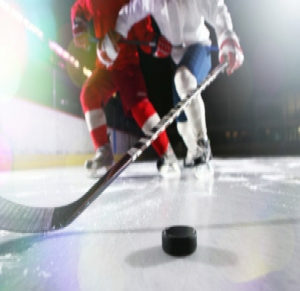Hockey players are generally plagued with injuries and dysfunctions in their body.
On top of being pinned, pushed, and beaten around the ice (and the impacts of such), it’s important to understand that the hockey stride itself puts players in a position that can result in a variety of imbalances including; tight hips, and rounded back and shoulders. Players then compound the effects of this position with the insane practice schedules and over a 60+ game schedule (Junior and Pro players) or an absolutely insane 80-120 + (minors).
While some players are coached to be mindful of the impact mobility/basic stretching/self-myofascial release work can have on their body and performance in the season, and off-season programs are increasingly intentional in restoring balance, alot of attention is placed on the hips and shoulder, which leads to players and trainers ignoring the significance of one joint on hockey performance: the ankle.
Unlike hip or shoulder mobility work, which is often motivated by trying to alleviate pain/discomfort, ankle pain or “tightness” is rarely a complaint in hockey players – but it is a joint in which optimal function supports on-ice performance, and which a large portion of hockey players are missing optimal function.
Kinetic Chains and The Ankle Mobility’s Effect Off-ice
To completely understand the role of the ankle in the hockey stride, it’s important to craft context for a basic understanding of “kinetic chains.” Kinetic chains are derived from biomechanics, that is, the movement at one joint affects movement at another joint, thereby creating a “chain system” operating as a collective function.
This is what gives the body powerful synergistic movement systems, but also means that an athlete that lacks an optimal range of motion at one joint will innately find a compensation somewhere else to successfully get into a position. This is often recognizable in squat patterns when an athlete has limited ankle (and/or hip) mobility and compensates by defaulting into a rounded back (or lumbar flexion) position to create the same depth. This s what is referred to as a suboptimal position as it not only makes less efficient/effective movements (hurting performance) but also puts the athlete at an increased likelihood of risk of injury through improperly loading mechanics.
While it’s easy to spot faulty squat mechanics in the gym, it’s difficult to explore activation patterns during a hockey stride, you could theorize that athlete’s who utilize quad-dominate activation patterns off-ice, will likely carry this over to their on-ice stride. This means that many players likely have untapped power in their stride that could be accessed by learning glute activation in the gym and more efficient movement patterns.
On top of underperforming glutes due to poor activation ankle mobility can be an underlying root cause for poor mechanics off the ice, and potentially spill over into a hockey player’s on-ice stride.
Ankle Mechanics and the Hockey Skate
When assessing a hockey stride, it’s important to consider the impact that the hockey skate has on the mechanics of the ankle.
To deliver an optimal and explosive force into the ice, the ankle needs to be extremely stable. With this in mind, skates are specifically designed to enhance ankle stability, and equipment companies continuously optimize skates to enhance ankle mechanics to allow players to generate more force into the skate. This is why we’ve seen boots get increasingly stiffer while also integrating features aimed at increasing mechanical capacity, and ankle flexion.
While skate design’s impact on the lower body is worth further discussion let’s also consider the long-term effects the skate boot has on the physical structure of the ankle. A hockey player, unlike any other athlete, expresses force through a range limited by equipment. This means that while young players develop, often they’ll get stronger up the chain, while the restriction of the tight hockey skate will prevent them from expressing this force through optimal ranges.
This, in turn, justifies the necessity for off-ice physical preparation programs at the youth age and a well-structured Strength & Conditioning program aimed at correcting movement limitations built up over time.
The Significance of Ankle Mobility on Hockey Performance
Based on the Hockey Players we have worked with and performed procedures on, our team has found that athletes that have the “cleanest” mechanics off-ice, typically translate this capacity to that classic smooth, technical stride. To make it a little simpler – the best squatters are the best skaters, and athlete that fails to get into an optimal position off-ice, likely won’t be able to express that position or movement efficiently or effectively on ice. It’s important to consider the significance of optimal function of all joints. Hockey inherently has factors that lead to imbalances and restrictions in players, and structured off-ice work needs to be a priority for players.
Dr. Bagwe is a leading orthopedic surgeon specializing in ankle and foot reconstruction. If you are looking for an orthopedic surgeon near you then look no further. Dr. Bagwe is an industry leader when it comes to foot and ankle surgery doctors in St. Louis. Dr. Bagwe and his friendly and professional team is ready to welcome you and tell you everything you need to know.
Reach out and






